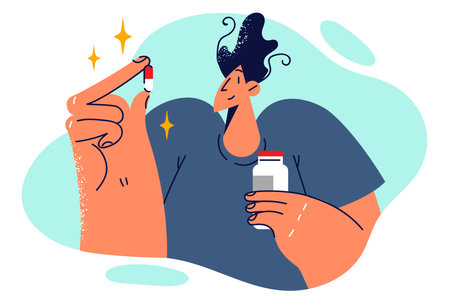1. Understanding the Root of Oily Skin
Before blaming your skincare routine, it’s important to understand why your skin might be oily in the first place. Oily skin isn’t just about using the wrong products — there are several underlying factors that can influence how much oil (or sebum) your skin produces.
Common Causes of Oily Skin
Here’s a breakdown of the most common causes of oily skin that could be working alone or together:
| Cause | Description | How It Affects Your Skin |
|---|---|---|
| Genetics | If oily skin runs in your family, chances are you’ve inherited it too. | Your sebaceous glands may naturally produce more oil than others. |
| Hormones | Hormonal changes during puberty, menstruation, pregnancy, or stress can spike oil production. | Increased androgen levels trigger more sebum, leading to shinier skin and potential breakouts. |
| Climate & Environment | Living in hot or humid areas can increase oiliness on your skins surface. | Your body produces more oil to protect and cool itself, especially during warmer months. |
| Overwashing or Harsh Products | Stripping your skin with harsh cleansers can backfire. | Your skin may overcompensate by producing even more oil to restore balance. |
Is Your Routine Making Things Worse?
If youre dealing with excess shine or breakouts, take a closer look at your skincare habits. Sometimes, using products meant for “oily skin” can actually dry out your face too much — causing it to pump out more oil as a defense mechanism. Over-cleansing, skipping moisturizer, or using alcohol-heavy toners can all make oily skin worse instead of better.
Quick Tip:
Instead of removing all oils from your routine, try balancing them. Look for ingredients like niacinamide, salicylic acid, or lightweight moisturizers labeled “non-comedogenic” (won’t clog pores).
2. How Over-Cleansing Can Backfire
When your skin feels oily, it might seem like washing your face more often is the solution. But heres the thing—cleansing too frequently or using harsh cleansers can actually make your skin oilier in the long run.
Why Over-Cleansing Is a Problem
Your skin naturally produces oils (called sebum) to keep itself hydrated and protected. When you wash your face too much or use products that are too strong, youre stripping away those essential oils. In response, your skin may go into overdrive trying to replace what it lost, leading to even more oil production.
Common Signs Youre Over-Cleansing
| Sign | What It Means |
|---|---|
| Tightness after washing | Your cleanser may be too drying |
| Increased oiliness during the day | Your skin is compensating for lost moisture |
| Irritation or redness | Your skin barrier might be damaged |
| Flaky patches | Your skin could be dehydrated, not just oily |
How Often Should You Cleanse?
A general rule of thumb is to cleanse twice a day—once in the morning and once at night. If you have very dry or sensitive skin, once a day might even be enough. Its also important to choose a gentle cleanser that won’t strip away your skin’s natural moisture.
Tips for Choosing the Right Cleanser
- Avoid sulfates: These can be too harsh and drying.
- Look for hydrating ingredients: Like glycerin or hyaluronic acid.
- Avoid alcohol-based formulas: They can disrupt your skin barrier.
- Packed with soothing ingredients: Such as aloe vera or chamomile.
Treat your skin gently—over-cleansing can do more harm than good. By finding the right balance, you can reduce excess oil without triggering even more sebum production.

3. The Truth About Moisturizers and Oily Skin
If you have oily skin, your first instinct might be to skip moisturizer altogether. It seems logical—why add more moisture when your skin already feels greasy? But here’s the truth: not using a moisturizer can actually make your skin produce even more oil.
When you skip moisturizer, your skin can become dehydrated. In response, it goes into overdrive trying to compensate for the lack of hydration by producing excess sebum (oil). This leads to that shiny, greasy look youre trying to avoid in the first place.
Why Moisturizer Is Still a Must for Oily Skin
Moisturizing isn’t just about adding hydration—it’s about balancing your skin. Using the right type of moisturizer helps keep your oil levels in check without clogging pores or causing breakouts.
Look for These Key Features:
| Feature | Why It Matters |
|---|---|
| Oil-Free | Prevents adding unnecessary grease to already oily skin |
| Non-Comedogenic | Formulated to not clog pores, reducing risk of breakouts |
| Lightweight Texture | Absorbs quickly without leaving a heavy or sticky residue |
| Gel-Based or Water-Based | Provides hydration without heaviness; ideal for oily skin types |
Top Ingredients to Look For:
- Hyaluronic Acid: Deeply hydrates without adding oil
- Niacinamide: Helps regulate oil production and improve skin texture
- Aloe Vera: Soothes and hydrates while being super lightweight
Pro Tip:
If you’re unsure which moisturizer to choose, go for one labeled “non-comedogenic” and “for oily or acne-prone skin.” These are specifically designed to hydrate without triggering excess oil or breakouts.
4. Ingredients That Might Be Making Things Worse
If your skin is feeling oilier even after following a skincare routine, the products you’re using might actually be part of the problem. Certain ingredients can clog pores or irritate your skin, triggering it to produce more oil as a defense mechanism. Let’s break down some common culprits to watch out for.
Ingredients That Can Clog Your Pores
Some skincare ingredients are comedogenic—meaning they can block your pores and lead to excess oil and breakouts. Heres a quick guide:
| Ingredient | Why It Can Be a Problem |
|---|---|
| Coconut Oil | Very rich and heavy; often too greasy for oily or acne-prone skin types. |
| Lanolin | A moisturizing agent that can clog pores for sensitive or oily skin types. |
| Algae Extract | Found in some “natural” products but may trigger breakouts in oily skin. |
| Sodium Lauryl Sulfate (SLS) | A harsh cleansing agent that can strip the skin and cause rebound oiliness. |
Irritating Ingredients That May Trigger Oil Production
Not all bad ingredients are pore-cloggers—some just irritate your skin, causing inflammation and increased sebum (oil) production as your body tries to soothe itself. Look out for these:
| Ingredient | Potential Effect on Skin |
|---|---|
| Denatured Alcohol / SD Alcohol 40 | Often used for a “quick dry” feel but can overly dry the skin, leading to more oil as a reaction. |
| Fragrance (Synthetic) | Can cause irritation and inflammation, especially for sensitive or acne-prone skin types. |
| Lemon/Citrus Oils | Might seem refreshing but can disrupt your skin’s natural barrier and increase oil production over time. |
What Should You Use Instead?
If youre noticing more shine than glow, try switching to non-comedogenic products labeled “oil-free” or “for acne-prone skin.” Also, look for calming and balancing ingredients like:
- Niacinamide – helps regulate oil without drying out your skin.
- Zinc PCA – controls sebum while soothing inflammation.
- Aloe Vera – hydrates without clogging pores and calms irritated skin.
- Salicylic Acid – gently exfoliates inside the pores to prevent buildup.
Pro Tip:
Your skin might be reacting to just one ingredient, not the entire product lineup. If you’re unsure, try eliminating one product at a time or consult with a dermatologist for personalized advice.
5. What to Switch Up in Your Skincare Routine
If your skin is feeling oilier than usual, your skincare routine might be part of the problem. Sometimes, products that seem helpful are actually triggering more oil production. Let’s break down a few simple swaps and additions you can make to help rebalance your skin.
Use a Gentle, Sulfate-Free Cleanser
Over-cleansing or using harsh cleansers can strip your skin of natural oils, causing it to produce even more oil as a defense mechanism. Choose a sulfate-free cleanser that effectively removes dirt and excess oil without drying out your skin.
Incorporate Oil-Control Ingredients
Certain ingredients can help manage oil production while keeping your skin healthy and clear. Here are some top options:
| Ingredient | Benefits for Oily Skin | How to Use |
|---|---|---|
| Salicylic Acid | Unclogs pores, reduces oil buildup, prevents breakouts | Use in a cleanser or toner 1–2 times daily |
| Niacinamide | Regulates sebum production, minimizes pores, soothes inflammation | Apply as a serum before moisturizer daily |
| Clay (Kaolin or Bentonite) | Absorbs excess oil, detoxifies skin, mattifies complexion | Use as a mask 1–2 times per week |
Avoid Over-Moisturizing with Heavy Creams
You might think oily skin doesn’t need moisturizer—but skipping it can backfire. The key is choosing the right one. Swap thick creams for lightweight, non-comedogenic gel moisturizers that hydrate without clogging pores.
Cut Back on Alcohol-Based Products
Toners or spot treatments with high alcohol content may feel like they’re drying up oil, but they often irritate the skin and trigger more sebum production. Look for alcohol-free alternatives that soothe and balance instead.
Add a Clay Mask to Your Weekly Routine
A good clay mask can do wonders for oily skin by drawing out impurities and reducing shine. Just don’t overdo it—using it once or twice a week is plenty to keep your skin fresh without over-drying it.
Quick Tips Recap:
- Switch to a gentle cleanser that won’t strip your skin.
- Add ingredients like salicylic acid and niacinamide for better oil control.
- Moisturize with lightweight formulas only.
- Avoid alcohol-heavy products that irritate oily skin.
- Use clay masks weekly for deep cleansing and mattifying effects.
Tweaking just a few steps in your routine can go a long way toward getting oily skin under control—without causing dryness or irritation in the process.

